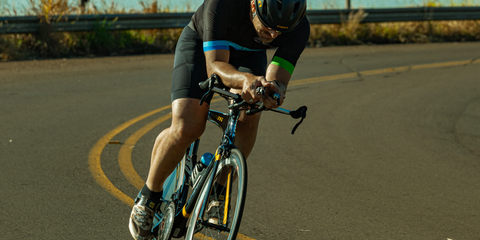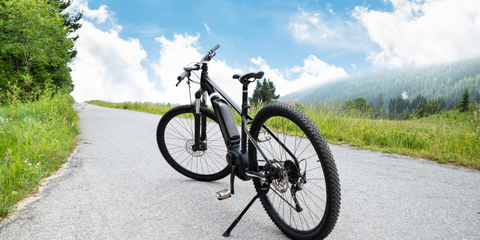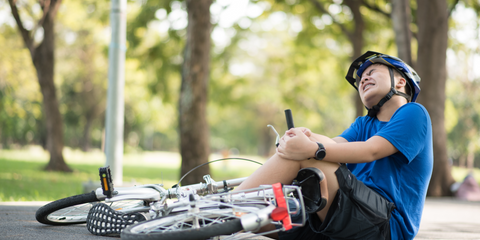The Best Bike for Commuting: A Guide to Choosing the Right Ride!
How to Choose The Best Bike
So, you've finally decided to ditch your car or public transport and looking for best bike to commute. Good call! Cycling is not only an eco-friendly option but also a great way to stay fit and active. But wait, before you rush into buying the first cycle you see, let's dive into the world of commuting cycles and find the perfect one for you. From comfort to durability, speed to storage, and weather resistance, there are quite a few things to consider. So gear up and get ready for an adventurous ride towards finding your ideal commuting cycle!

Why Choose bike as a Commuting Option:
Are you tired of being stuck in traffic? Oh, the joys of sitting in a metal box, seething with frustration as the minutes tick by. Well, fear not, my fellow commuter, for there is a solution! cycling. Yes, that's right. Two wheels, some pedals, and a whole lot of freedom.
But why choose cycling as your preferred commuting option? Well, let me enlighten you. First and foremost, cycling is a fantastic way to stay fit and healthy. Forget about expensive gym memberships – just hop on your bike and pedal away those extra calories. Plus, who needs a morning coffee when you've got the invigorating rush of wind in your face?
Not to mention, cycling is environmentally friendly. Say goodbye to contributing to the smog and pollution in your city. Instead, embrace the wind in your hair and the satisfaction of knowing you're doing your part for Mother Earth.

Oh, did I mention the joy of avoiding parking hassles? No more circling the block like a vulture, desperately searching for a spot. With a bike, the world is your parking lot. Just find a sturdy bike rack, lock it up, and voila – you're good to go
But wait, there's more! Cycling can even save you money. No more pouring your hard-earned cash into endless gallons of gas. Instead, invest in a trusty bicycle and watch your bank account flourish.
So, my dear reader, if you're ready to break free from the shackles of traffic and experience the joys of bicycle, hop on board and embrace the pedal-powered revolution. Your body, mind, wallet, and planet will thank you for it.
Considerations for Commuting bikes:
Choosing the perfect bicycle for commuting can be a daunting task. With so many options out there, it's easy to get overwhelmed. But fear not, because I'm here to guide you through the process and help you make an informed decision. So let's dive right in!
Comfort:
When it comes to commuting, comfort is key. You don't want to arrive at your destination with a sore behind or aching back. Look for a cycle with a comfortable seat and an ergonomic design that allows for a natural riding position. You might also want to consider bikes with suspension systems that absorb shocks, making your ride smoother than ever.

Durability:
Nobody wants a cycle that falls apart after a few rides. Look for a sturdy frame made from high-quality materials like aluminum or carbon fiber. Make sure the components, such as the gears and brakes, are durable and built to last. You don't want your cycle giving up on you halfway through your daily commute.
Speed:
If you're a speed demon and like to zip through traffic, then choosing a cycle that offers good speed is a must. Look for cycles with lightweight frames and aerodynamic designs. Bikes with multiple gears will also allow you to adjust your speed based on the terrain and your fitness level.
Storage:
Unless you have a personal chauffeur to carry your stuff, you'll need a cycle that offers ample storage options. Look for cycles with racks or baskets that can hold your backpack, groceries, or that extra-large cup of coffee. You might also want to consider cycles with built-in panniers or a sturdy frame to attach accessories like saddlebags.

Weather Resistance:
Sadly, the weather doesn't always cooperate with our commuting plans. Look for cycles with fenders that will protect you from splashes on rainy days. If you live in a particularly rainy or snowy area, consider a cycle with wider tires for better traction. And if you're really adventurous, you could even opt for a cycle with integrated lights or reflective gear to ensure you stay visible even in low light conditions.
Now that you have a better idea of what to look for in a commuting cycle, it's time to hit the road (metaphorically, of course)! Keep these considerations in mind while exploring different types of cycles, such as road bikes, city bikes, hybrid bikes, folding bikes, and electric bikes. Don't forget to invest in accessories like reflective gear, lights, helmets, mirrors, and locks to ensure a safe and enjoyable commute.
Remember, choosing the perfect cycle is all about finding the right balance between comfort, durability, speed, storage, and weather resistance. So go ahead, find your two-wheeled companion, and enjoy the ride!
Different Types of Commuting bikes:
Cycling has become increasingly popular as a mode of transportation, and for good reason! Not only is it an eco-friendly option, but it's also a great way to incorporate exercise into your daily routine. However, choosing the right cycle for commuting can be overwhelming with so many options available in the market. Don't worry; We are here to explain the different types of commuting cycles to make your decision a little easier.
Road Bikes:
Let's start with road bikes. These sleek and lightweight machines are designed for speed and efficiency on paved roads. If you're looking to get from point A to point B as quickly as possible, a road bike is your best bet. Just make sure you're comfortable with the aggressive riding position and narrow tires that prioritize speed over comfort.

City Bike:
City bikes, on the other hand, are built for urban environments with their sturdy frames and upright riding position. They're perfect for navigating crowded streets and tackling potholes without breaking a sweat. So, if you want a reliable and low-maintenance cycle for commuting, a city bike might be the way to go.

Hybrid bike:
If you can't decide between a road bike and a city bike, then a hybrid bike might just be the answer to your dilemma. With a blend of road bike speed and city bike comfort, these versatile options are great for commuting on a variety of terrains. Whether you're dealing with smooth roads or bumpy paths, a hybrid bike can handle it all.

Folding Bike:
Next up, we have folding bikes. These compact wonders are perfect for commuters who need a cycle that can easily be stowed away in tight spaces. Whether you're hopping on a train or need to store your bike in a small apartment, foldable bikes are your best friend. They may not offer the same speed or efficiency as road bikes, but their convenience more than makes up for it.

Electric bike:
Electric bikes are gaining popularity among commuters who want to cover longer distances without breaking a sweat. With a battery-powered motor, these cycles provide an extra boost to your pedaling and make uphill climbs a breeze. If you're not a fan of arriving at work all sweaty and tired, an electric bike might be just what you need.

Cyclocross Bicycles:
Often referred to as 'cross bikes or cx bikes, stand as a specialized category of road bikes uniquely designed for mixed surface racing, combining pavement, trails, gravel, and grass. They feature drop handlebars akin to road bikes, but distinguish themselves with slightly wider tires for improved off-road traction and specialized brakes that prevent mud buildup in the frame. These bikes epitomize versatility and performance.

By now, I hope you have a clearer picture of the different types of commuting cycles available. Remember to choose a cycle that aligns with your needs and preferences. Whether it's the need for speed, comfort, convenience, or a little bit of everything, there's a cycle out there for you. Happy cycling
Now that you know all about the different types of commuting cycles, it's time to prioritize safety. Don't forget to invest in reflective gear, such as Reflective socks, jersey, shoe cover, to increase your visibility on the road.
With ReflecToes Reflective Gear, you'll be turning heads with every pedal stroke while ensuring that you're seen by motorists, pedestrians, and even aliens from outer space (you never know!). Stay safe, be seen, and enjoy your cycling adventures with ReflecToes reflective gear. Happy cycling!
Accessories for Safe bikes:
We all know that cycling is not just a fun activity, but it's also a great mode of transportation. But let's face it, safety should be our top priority while pedaling through the busy streets. That's where accessories for safe cycling come into play. These nifty little gadgets not only add to your style quotient but also ensure that you are visible and well-protected on the road.
Reflective gear:
First up, we have reflective gear. Think of them as your fashion-forward safety buddies. Reflective gear, like the ReflecToes Reflective Gear, is designed to make you shine like a superstar, even in the darkest of nights. So, whether you're a trendsetter or just someone who doesn't want to be mistaken for a shadow, these reflective accessories are a must-have.
Lights:
Lights are another essential accessory for safe cycling. Not only do they illuminate your path, but they also make you visible to other road users. From cool LED lights that create a disco party on your wheels to powerful headlights that can rival car beams, there's a wide variety to choose from. Just remember, the brighter, the better.
Helmet:
Now, let's talk about helmets. Yes, they may not be the most fashionable accessories, but they are definitely a lifesaver. When it comes to protecting your precious noggin, there's no compromising. Make sure to invest in a helmet that fits snugly and is certified for safety. After all, it's better to look like a mushroom than to have a cracked skull, right?
Mirrors
Mirrors may sound like something you'd find in a dressing room, but in the world of cycling, they are game-changers. These small reflective surfaces attached to your handlebars or helmet allow you to see what's happening behind you without having to turn your head. No more surprises from overly enthusiastic drivers! Just a quick glance and you're good to go.
Locks:
Lastly, we have locks. Trust me, you don't want to experience that sinking feeling when you realize your beloved bike has vanished into thin air. A sturdy lock is your best friend when it comes to preventing bike theft. Look for one that's heavy-duty and unbreakable, because bike thieves ain't got no chill.
To ensure a safe and enjoyable cycling experience, don't forget to gear up with these accessories. Reflective gear, lights, helmets, mirrors, and locks are all designed to keep you visible, protected, and one step ahead of the game. So, go ahead, embrace your inner cyclist, and ride like the wind! But remember safety first!











































































